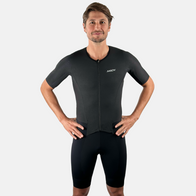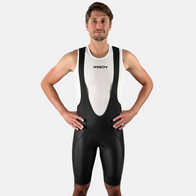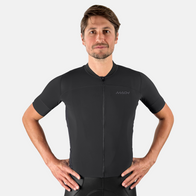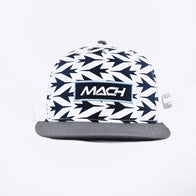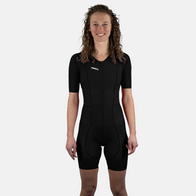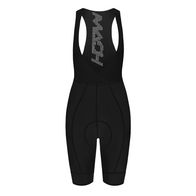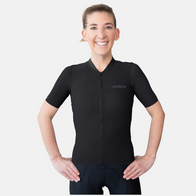
Transform Your Training: 5 Ways Medical Massages Boost Triathlon Success
Written By: Isaiah Duff LMT
Triathlon is a sport that demands the utmost from its athletes, blending swimming, cycling, and running into one grueling, exhilarating challenge. For those dedicated to this demanding sport, finding ways to enhance performance and speed up recovery is crucial. That's where the transformative power of medical massage therapy comes into play, offering a range of benefits tailor-made for the triathlete. Here are 5 ways that medical massage can give you an edge for your next race.
1. Muscle Maintenance & Metabolic Waste Management: Keeping the Engine running smoothly
In the world of triathlon, muscle tightness is a frequent, unwelcome guest. Training intensity often leads to microscopic muscle fiber damage, manifesting as delayed onset muscle soreness (DOMS). Medical massage therapy steps in as a crucial ally, utilizing specialized techniques to enhance blood flow, relax muscle tissues, and reduce over-contraction. This intervention not only soothes aching muscles but also expedites muscle recovery, keeping triathletes in peak form. Training also generates metabolic by-products like lactates, which can lead to fatigue and muscle aches. Massage therapy accelerates the removal of these wastes by stimulating the lymphatic system. This quick elimination reduces pain, fatigue, and swelling, enabling a faster return to training, crucial for maintaining a rigorous triathlon schedule.
2. Accelerated Recovery: Bouncing Back Faster
After pushing their limits in a big race or a heavy training block, triathletes need a quick turnaround for recovery. Massage therapy plays a pivotal role here, easing muscle soreness, improving circulation, and aiding the repair of workout-induced micro-tears. This not only reduces joint and muscle pain but also prepares the muscles for their next endurance test, healthier and more resilient than before. Learning how to align your massage treatment plan with your training and race schedule is central to optimizing the outcomes of this benefit of medical massage.
3. Injury Prevention and Pain Management: Easing the Aftermath of Intense Training
Intense workouts can lead to muscle fiber micro-tears, causing inflammation and pain. Massage therapy counters this by reducing the buildup of inflammation-causing cytokines and stimulating mitochondrial biogenesis for cellular repair. This dual action not only relaxes tendons, joints, and muscles but also blocks pain signals on the nervous system level. These benefits also serve an additional purpose of reducing sports related injury risk by decreasing forces exerted on fatigued muscles by adjacent tissues, and improving mobility. This “pre-hab” provides much-needed relief and sets up the rigorously trained triathlete for success.
4. Mobility: The Secret Ingredient for Peak Performance
Mobility is a necessity for triathletes. Techniques like deep tissue massage, proprioceptive neuromuscular facilitation (PNF), and myofascial release target specific muscles and connective tissues, enhancing blood flow and reducing muscle tension. Which in turn improves mobility and range of motion, translating directly into better performance across all triathlon disciplines, from longer, more efficient swim strokes to a more effective cycling downstroke.
5. Enhances Focus and Reduces Stress: Maintaining mental health after high-intensity training
Despite the intensity of sports and deep tissue massages, both can induce a state of relaxation. Massage therapy is well documented in reducing stress and anxiety, lowering blood pressure, and improving mood. These outcomes can lead to better focus while training and reduce the risk of burn out for the over trained triathlete. Consistently taking advantage of these mental health benefits are sure to improve physical performance in training and races.
Customizing the Approach: A Synergy with Your Training Regimen
The effectiveness of massage therapy isn't one-size-fits-all. It requires customization to align with each triathlete's unique training plan, goals, and physical needs. Regular, tailored massage sessions as part of a periodized training plan yield the best results. Whether it's a deep tissue massage for specific concerns or a general flush during heavy training phases, the key is a collaborative approach between the athlete and therapist.
Conclusion: An Indispensable Tool in the Triathlete's Arsenal
Embracing medical massage therapy isn't just about indulging in relaxation; it's about investing in performance and longevity in the sport. By integrating regular, specialized massage therapy into their training regimen, triathletes can look forward to enhanced performance, quicker recovery, and a reduced risk of injuries, ensuring they remain at the top of their game.
As you gear up for your next race, consider incorporating medical massage therapy into your routine. It's not just a luxury; it's a necessity for those striving for excellence in the world of triathlon.

Author: Isaiah Duff LMT, Owner of R&R BodywoRx
Mach Apparel and R&R BodywoRx collaborated to bring this insightful piece to triathletes.
Sources:
https://pubmed.ncbi.nlm.nih.gov/22301554/
https://www.sunrinityhealth.com/5-reasons-triathletes-crossfit-and-multisport-athletes-need-mas
sage-therapy/
https://getactivephysio.com.au/massage-runners-triathletes/
https://bettertriathlete.com/recovery/remedial-massage-benefits/





